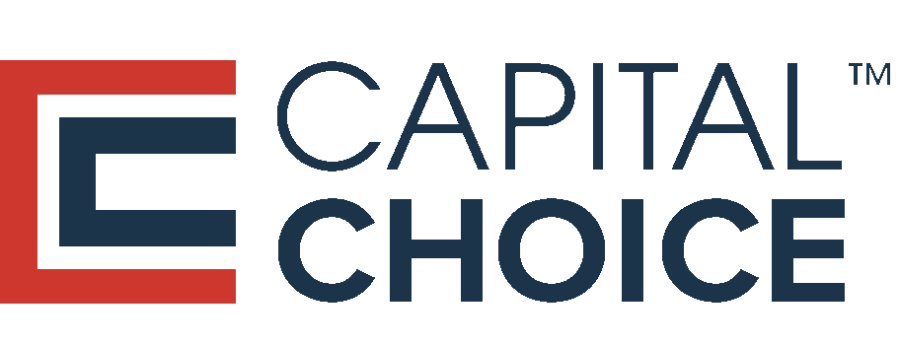I. Introduction
Hello there, friends!
If you’re anything like me, you’ve probably spent many a sleepless night thinking about retirement. It’s one of those big, scary, future things that we all know is important but can’t quite wrap our heads around. The mere thought of it might even give you heart palpitations. Trust me, I’ve been there, and I totally get it.
But here’s the thing: Retirement isn’t something to be feared. In fact, it’s something to look forward to! It’s that beautiful period in life where you finally get to kick back, relax, and enjoy the fruits of your hard labor. But here’s the catch – to make the most out of it, you need to plan for it.
That’s right, folks! A stress-free retirement doesn’t just happen by accident. It’s the result of careful, strategic planning and a good understanding of your options. And that’s exactly what we’re going to talk about today.
So, grab a cup of coffee (or tea, if that’s your thing), take a deep breath, and let’s dive into the world of retirement planning. It’s much simpler than you think, and I promise – no heart palpitations involved!
II. The Importance of Planning for Retirement
Let’s start with a simple truth: retirement planning is not just for the “old and gray.” It’s for all of us. Whether you’re in your 40s, 50s, or even younger, it’s never too early to start thinking about your golden years.
Why, you ask? Well, think about it this way: Imagine you’re planning a long road trip. You wouldn’t just jump in your car and start driving without a map or GPS, would you? Of course not! You’d plan your route, check the weather, pack some snacks, etc. In short, you’d prepare.
Retirement is a lot like that road trip. It’s a long journey, and it requires preparation. If you don’t plan ahead, you might find yourself running out of gas in the middle of nowhere.
In my case, I started planning for retirement in my mid-thirties. At the time, it seemed like a distant dream. But now, as I inch closer to those golden years, I can’t tell you how relieved I am that I started early. It’s given me peace of mind knowing that I’m financially prepared for the journey ahead.
But here’s the kicker: retirement planning isn’t just about stashing away money. It’s also about understanding your options, like 401(k) plans, Individual Retirement Accounts (IRAs), and Social Security benefits. And that, my friends, is what we’ll dive into next. So stay tuned!
III. Understanding Your Retirement Options
Alright, folks! Buckle up because we’re about to venture into the land of 401(k)s, IRAs, and Social Security benefits. Don’t worry, it’s not as daunting as it sounds. Let’s break it down together.
First on our list is the 401(k) plan. This is a retirement savings account that you get through your employer. Remember back in the day when I worked for that big tech company? Well, they had lots of great benefits, one being their 401(k) plan. And boy, am I grateful for that! You see, the beauty of a 401(k) is that the money you contribute is tax-deductible. Plus, many employers match a portion of your contributions. It’s like getting free money!
Next up is the Individual Retirement Account or IRA. This is a savings account you set up yourself. There are two main types: Traditional and Roth. The difference between them mainly comes down to when you pay taxes. With a Traditional IRA, you pay taxes when you withdraw the money during retirement. With a Roth IRA, you pay taxes upfront, but withdrawals during retirement are tax-free. I personally prefer the Roth IRA because who knows where tax rates will be when I retire?
Last but not least, we have Social Security benefits. Now, I know there’s a lot of doom and gloom out there about Social Security running out of money. But let’s not panic just yet. While it’s true that the system is facing some challenges, it’s still expected to pay out benefits for years to come. So, it’s definitely something to factor into your retirement planning.
In the end, understanding these options was a game-changer for me. It helped me create a diversified retirement portfolio and gave me confidence in my financial future. And trust me, if I can do it, so can you!
IV. Creating a Stress-Free Retirement Plan
Now that we’ve explored the various retirement options, let’s talk about how to create a stress-free retirement plan. Trust me, it’s not as complicated as it sounds. In fact, it can be boiled down to three simple steps: Understand, Plan, and Act.
Understand: The first step is to understand your retirement needs. How much money will you need to maintain your lifestyle in retirement? Don’t forget to factor in things like healthcare costs and inflation. I remember when I first did this exercise, the numbers seemed daunting. But don’t let that scare you! Remember, retirement planning is a long-term game. It’s not about hitting a magic number overnight.
Plan: Once you have a clear understanding of your needs, it’s time to create a plan. This involves deciding how much to contribute to your 401(k) or IRA, figuring out when to start claiming Social Security benefits, and so on. When I was planning, I found it helpful to speak with a financial advisor. They can provide valuable insights and help you navigate the complexities of retirement planning.
Act: Finally, it’s time to put your plan into action. Start making regular contributions to your retirement accounts, invest wisely, and keep an eye on your progress. One thing I’ve learned over the years is that retirement planning isn’t a “set it and forget it” thing. It requires regular check-ins and adjustments as your life and financial situation evolve.
And there you have it – a simple roadmap to creating a stress-free retirement plan. Remember, the key to a successful retirement is starting early and staying consistent. So, don’t wait any longer. Start planning today!
In the next section, we’ll discuss some common retirement myths that might be holding you back. So stay tuned!
V. Lifestyle Considerations in Retirement
As we venture further into the realm of retirement planning, it’s crucial to not overlook one significant factor: your lifestyle. Yes, finances are a significant part of the equation, but money alone doesn’t guarantee a fulfilling retirement. You need to consider how you want to spend your time and what kind of lifestyle you want to lead.
Health and Wellness: As we age, health becomes an increasingly important factor. Regular exercise, a balanced diet, and regular check-ups will be integral to maintaining a good quality of life. You might also want to consider where you live in relation to healthcare facilities and whether you’ll need any form of long-term care.
Hobbies and Interests: Retirement is the perfect time to pursue passions that you may have put on the back burner. Whether it’s gardening, painting, traveling, or volunteering, make sure to factor these activities into your plan. They not only enrich your life but can also have associated costs that need to be budgeted for.
Social Connections: Maintaining a robust social network is essential for mental and emotional well-being. Consider how you’ll continue to engage with friends, family, and your community. Will you join clubs or organizations? Maybe move closer to family or friends?
Housing: As you age, your housing needs may change. Perhaps a large family home is no longer necessary, and downsizing is more practical. Or maybe you’ve always dreamt of retiring by the sea or in a bustling city. Remember, your living situation in retirement can significantly impact your cost of living.
Legacy Planning: Lastly, many people start thinking about the legacy they want to leave behind. This could involve estate planning, setting up trusts, or making provisions for loved ones.
Taking the time to reflect on these lifestyle considerations will help ensure that your retirement plan aligns with your vision for your golden years. After all, retirement is not just about ending a career; it’s about starting a new, exciting chapter in life. So, make sure it’s a chapter you’ll enjoy!
VI. Preparing for the Unexpected
Life is full of surprises, isn’t it? And while some surprises bring joy and excitement, others can be challenging and disruptive, especially when we’re talking about our retirement years. In this section, we’ll discuss how to prepare for unexpected events that could impact your retirement plan.
Healthcare Costs: One of the biggest unexpected costs in retirement can be healthcare. Even with Medicare, out-of-pocket expenses can add up quickly. To prepare, consider investing in a Health Savings Account (HSA) or purchasing supplemental insurance. Long-term care insurance can also be a good idea, as it covers services like home health care and assisted living facilities.
Inflation: The cost of living tends to rise over time, which can erode your purchasing power in retirement. To combat this, consider investments that provide an inflation hedge, such as Treasury Inflation-Protected Securities (TIPS). Rising expenses like rent can wreak havoc on a retirement plan, so owning the real estate you retire in can go a long way combating rising inflation.
Market Volatility: Stock markets can be unpredictable, and downturns can significantly impact your retirement portfolio. To protect yourself, ensure your investment portfolio is diversified and aligned with your risk tolerance. As you approach retirement, gradually shift towards more conservative investments to protect your nest egg.
Longevity: With advances in healthcare, people are living longer than ever before. While this is certainly a good thing, it also means that your retirement savings need to last longer. To plan for this, consider strategies like delaying Social Security benefits to increase your monthly payout, or annuitizing a portion of your savings to guarantee income for life.
Unexpected Life Events: Life can throw curveballs, like the loss of a spouse, sudden illness, or natural disasters. Having a robust emergency fund, adequate insurance coverage, and an updated estate plan can help you navigate these challenges.
Remember, the goal isn’t to predict every possible scenario (if only we could!). Instead, it’s about building a flexible retirement plan that can weather life’s ups and downs. By preparing for the unexpected, you can approach your golden years with confidence and peace of mind.
VII. Conclusion
Retirement planning might seem like a daunting task, but with the right approach and resources, it can be a manageable and even rewarding process. From understanding your retirement needs to considering your lifestyle choices and preparing for the unexpected, each step you take brings you closer to the secure and fulfilling retirement you’ve been dreaming of.
While this guide has provided you with a roadmap to creating a stress-free retirement plan, remember that everyone’s journey is unique. Your retirement plan should reflect your personal goals, circumstances, and aspirations.
Don’t hesitate to seek professional advice when needed. Financial advisors, estate planners, and tax professionals can provide valuable insights and help you navigate the complexities of retirement planning.
Finally, remember that planning for retirement isn’t a one-time event, but an ongoing process. Your plan should be flexible enough to evolve as your life and financial situation change. Regular check-ins and adjustments can ensure that you remain on track to achieving your retirement goals.
In closing, I hope this guide has empowered you to take charge of your financial future. Remember, it’s never too early or too late to start planning for retirement. So, why wait? Start your journey today and look forward to a retirement that’s as unique and fulfilling as you are!




